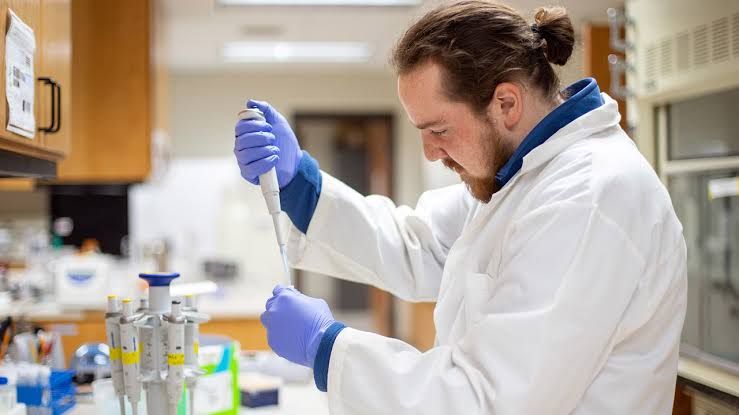
The assay of urease enzyme activity from horse gram involves several steps, including preparation of the enzyme source, reaction setup, incubation, and measurement of ammonia produced. Below is a detailed step-by-step explanation of the procedures involved.
1. Preparation of Enzyme Source
Materials Needed:
- Horse gram seeds
- Distilled water
- Pestle and mortar
- Coarse cloth for filtration
Procedure:
- Grinding Seeds: Take approximately 1 gram of dried horse gram seeds and grind them into a fine powder using a pestle and mortar.
- Suspension: Suspend the powdered seeds in 100 mL of distilled water. Stir well to ensure that the powder is evenly distributed in the solution.
- Filtration: Filter the suspension through a coarse cloth to obtain a clear liquid, which will serve as the enzyme extract (urease source). This filtrate contains the active urease enzyme.
2. Reaction Setup
Materials Needed:
- 3% Urea solution
- 0.2M Phosphate buffer (pH 7)
- Nessler’s reagent (K2HgI4)
- H2SO4 (0.66N)
- Sodium tungstate (1M)
Procedure:
- Substrate Preparation: Prepare a substrate solution by mixing 1 mL of the 3% urea solution with 1 mL of phosphate buffer (0.2M, pH 7).
- Enzyme Addition: Add 1 mL of the prepared enzyme extract to the substrate solution.
- Incubation: Incubate this mixture at an optimum temperature of 55°C for about 15 minutes to allow the urease to catalyze the hydrolysis of urea into ammonia and carbon dioxide.
3. Stopping the Reaction
Materials Needed:
- H2SO4 (0.66N)
- Sodium tungstate (1M)
Procedure:
- Stopping Reaction: After incubation, quickly place the tubes on ice to halt further enzymatic activity.
- Precipitating Proteins: Add 1 mL of H2SO4 (0.66N) to stop the reaction completely and then add another 1 mL of sodium tungstate solution to precipitate any proteins present in the mixture.
- Filtration or Centrifugation: Filter or centrifuge this mixture to remove any precipitate formed during this step.
4. Measurement of Ammonia Produced
Materials Needed:
- Nessler’s reagent
- Spectrophotometer
Procedure:
- Color Development: Take aliquots from the supernatant obtained after centrifugation or filtration and add them to test tubes containing Nessler’s reagent.
- Mixing: Mix thoroughly and allow it to develop color; ammonia reacts with Nessler’s reagent to form a brown complex.
- Spectrophotometric Analysis: Measure the intensity of color at a wavelength of 500 nm using a spectrophotometer.
5. Calculation of Urease Activity
To calculate urease activity:
- Use a standard graph prepared from known concentrations of ammonium sulfate solutions treated similarly with Nessler’s reagent.
- Determine how much ammonia was produced in mg per milliliter over a period (15 minutes) based on absorbance readings compared against your standard curve.
Conclusion
By following these detailed steps, you can effectively assay urease activity from horse gram seeds, allowing for quantitative analysis based on ammonia production during urea hydrolysis.







